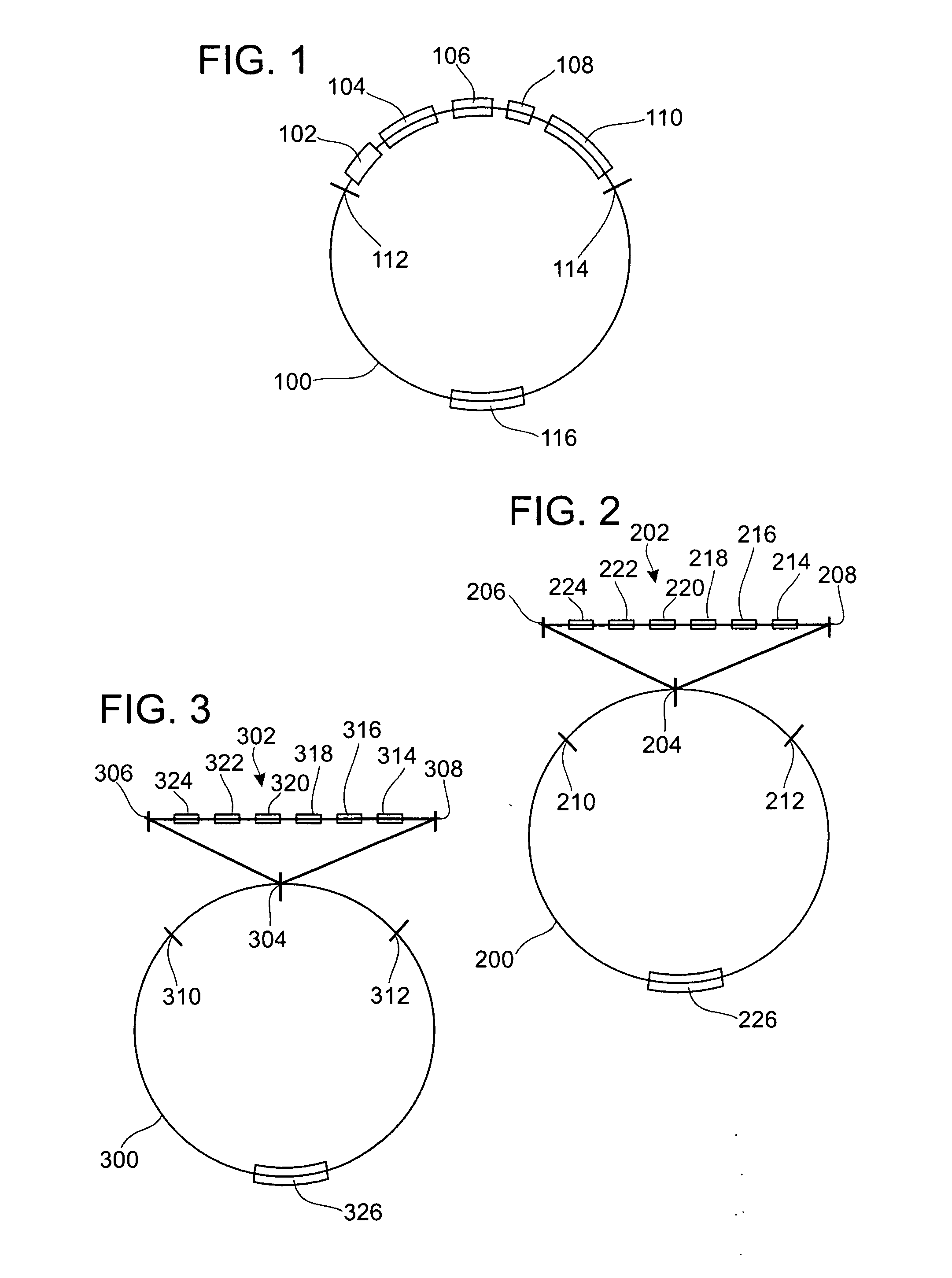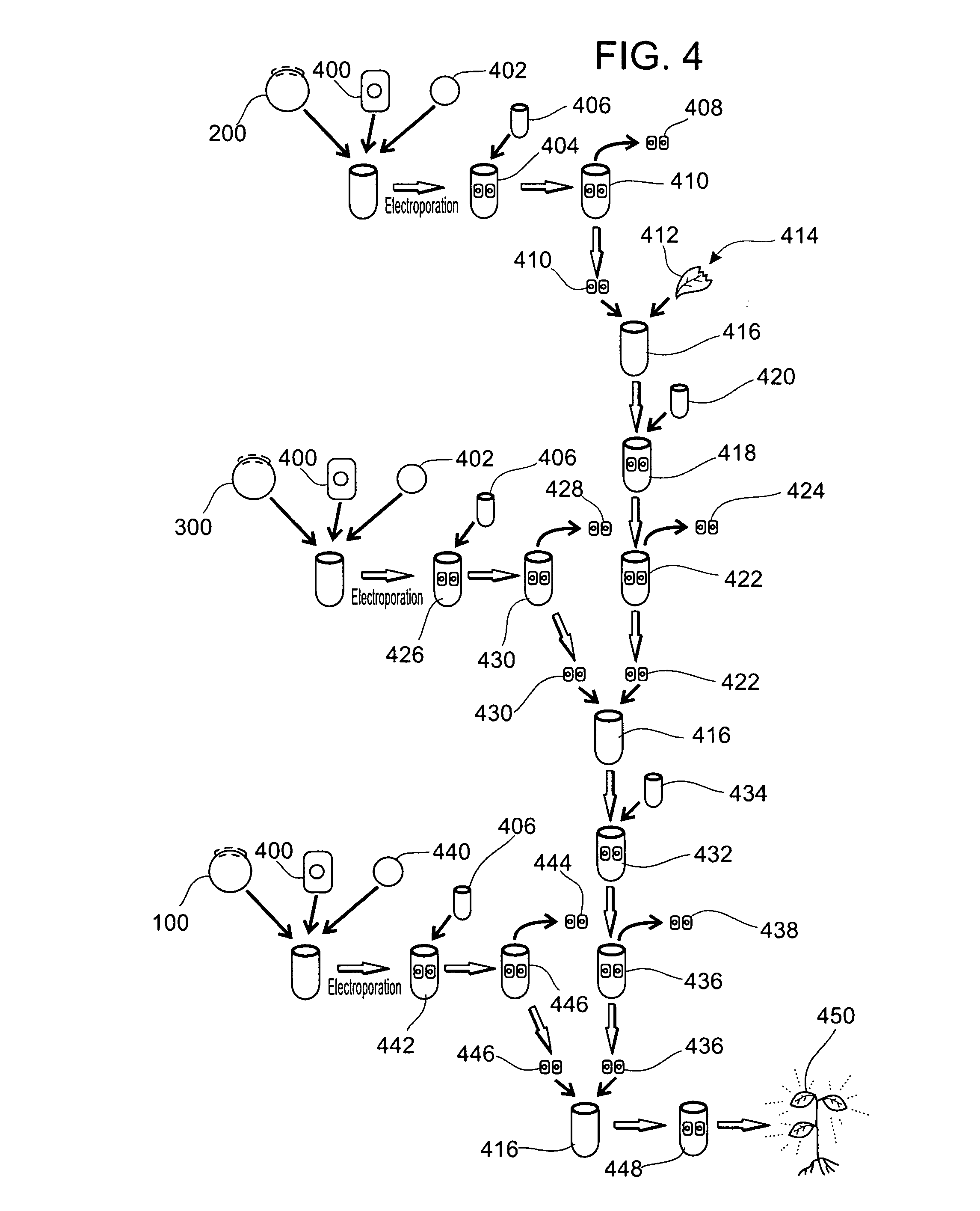Transgenic bioluminescent plants
a bioluminescent plant and transgenic technology, applied in the field of transgenic bioluminescent plants, can solve the problems of inability to produce in vivo bioluminescence without the addition of chemicals, and in larger organisms outside of the laboratory environmen
- Summary
- Abstract
- Description
- Claims
- Application Information
AI Technical Summary
Benefits of technology
Problems solved by technology
Method used
Image
Examples
Embodiment Construction
[0025]The plants and methods discussed herein are merely illustrative of specific manners in which to make and use the invention and are not to be interpreted as limiting the scope of the instant invention.
[0026]While the plants and methods have been described with a certain degree of particularity, it is to be noted that many modifications may be made in the construction and the arrangement of the structural and functional details without departing from the spirit and scope of this disclosure. It is understood that the plants and methods are not limited to the embodiments set forth herein for purposes of exemplification.
[0027]It is possible that in some or all plants, bioluminescence will be enhanced by directing the luciferase and corresponding luciferin to a specific location within the plant. This may be accomplished using control sequences that result in the addition of amino acids at either the N- or C-termini of the proteins. These added amino acids utilize mechanisms within ...
PUM
| Property | Measurement | Unit |
|---|---|---|
| resistance | aaaaa | aaaaa |
| temperature | aaaaa | aaaaa |
| stress- | aaaaa | aaaaa |
Abstract
Description
Claims
Application Information
 Login to View More
Login to View More - R&D
- Intellectual Property
- Life Sciences
- Materials
- Tech Scout
- Unparalleled Data Quality
- Higher Quality Content
- 60% Fewer Hallucinations
Browse by: Latest US Patents, China's latest patents, Technical Efficacy Thesaurus, Application Domain, Technology Topic, Popular Technical Reports.
© 2025 PatSnap. All rights reserved.Legal|Privacy policy|Modern Slavery Act Transparency Statement|Sitemap|About US| Contact US: help@patsnap.com


